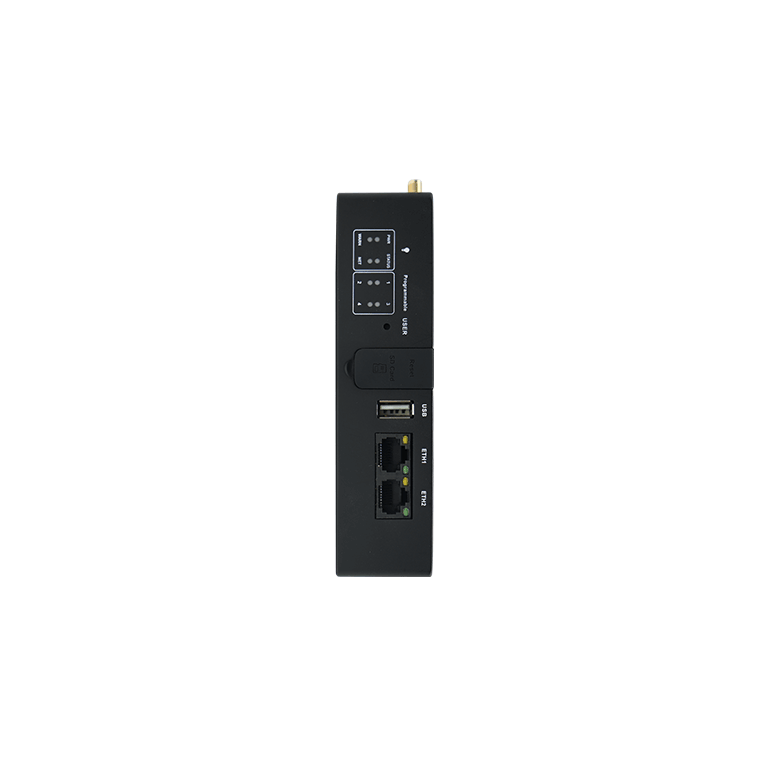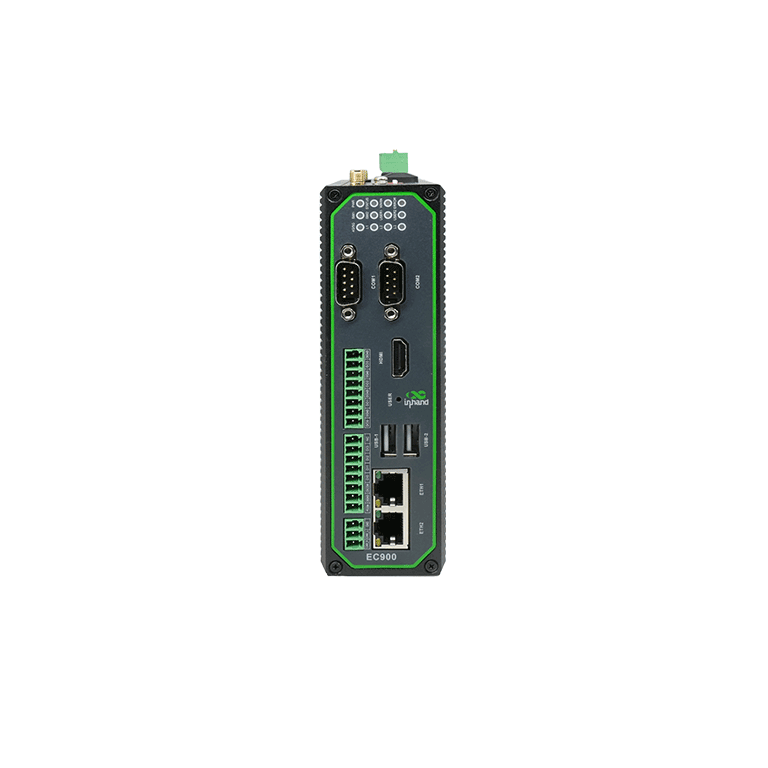
Da das Internet der Dinge (IoT) immer weiter wächst, gewinnt das Edge Computing zunehmend an Bedeutung. Durch die Verarbeitung von Daten näher am Entstehungsort werden beim IoT-Edge-Computing Latenzzeiten verringert, die Geschwindigkeit erhöht und die Effizienz verbessert. Die Wahl des richtigen Computers für IoT-Edge-Computing ist von entscheidender Bedeutung, und die Debatte dreht sich oft um x86-basierte Computer gegenüber ARM-basierten Computern. In diesem Artikel gehen wir auf die Stärken und Schwächen der beiden Systeme ein und helfen Ihnen, eine fundierte Entscheidung für Ihre IoT-Anwendungen zu treffen.
Was ist IoT Edge Computing?
Definition
IoT-Edge-Computing bezieht sich auf die Verarbeitung von Daten am Rande des Netzwerks, in der Nähe der Datenquelle, und nicht in einem zentralen Rechenzentrum oder einer Cloud. Dieser Ansatz minimiert die Latenzzeit und die Bandbreitennutzung und ermöglicht die Datenverarbeitung in Echtzeit.
Applikationen
Edge Computing wird in verschiedenen Anwendungen eingesetzt, z. B. in intelligenten Städten, in der industriellen Automatisierung, im Gesundheitswesen und in autonomen Fahrzeugen. Es ermöglicht eine schnelle Entscheidungsfindung und entlastet die zentralen Server.
Vorteile
Zu den Vorteilen des IoT-Edge-Computing gehören geringere Latenzzeiten, höhere Geschwindigkeit, verbesserte Sicherheit und größere Zuverlässigkeit. Durch die lokale Verarbeitung von Daten werden schnellere Reaktionen und ein besseres Nutzererlebnis gewährleistet.
Die Bedeutung der Wahl des richtigen Computers für das IoT
Leistung
Die Leistung des Computers wirkt sich direkt auf die Effizienz und Geschwindigkeit der Datenverarbeitung in IoT-Anwendungen aus. Die Wahl der richtigen Architektur ist entscheidend für eine optimale Leistung.
Wirkungsgrad
Ein effizienter Stromverbrauch und ein effizientes Wärmemanagement sind für den Dauerbetrieb von entscheidender Bedeutung, insbesondere an abgelegenen oder unzugänglichen Orten.
Skalierbarkeit
Die Fähigkeit zur Skalierung und Anpassung an wachsende Anforderungen ist eine wesentliche Voraussetzung für zukunftssichere IoT-Implementierungen.
Kosten
Sowohl die Erstinvestition als auch die langfristigen Wartungskosten spielen bei der Entscheidungsfindung eine wichtige Rolle.
Überblick über x86-basierte Computer
Architektur
Die x86-Architektur ist eine Familie von Befehlssatzarchitekturen, die auf der Intel 8086 CPU basieren. Sie wird häufig in Personal Computern, Servern und Workstations eingesetzt.
Geschichte
Die von Intel entwickelte x86-Architektur ist seit Jahrzehnten das Rückgrat der Computertechnik und hat sich im Laufe der Zeit erheblich weiterentwickelt.
Wesentliche Merkmale
Zu den Hauptmerkmalen gehören leistungsstarke Verarbeitungsfunktionen, umfangreiche Softwareunterstützung und ein großes Ökosystem kompatibler Hardware und Software.
Häufige Anwendungsfälle
x86-basierte Computer werden häufig in Rechenzentren, Desktops, Laptops und Hochleistungsanwendungen eingesetzt, die eine hohe Rechenleistung erfordern.
Überblick über ARM-basierte Computer
Architektur
Die ARM-Architektur (Advanced RISC Machine) ist eine Familie von RISC-Architekturen (Reduced Instruction Set Computing). Sie ist für ihre Leistungseffizienz bekannt und wird häufig in mobilen Geräten und eingebetteten Systemen eingesetzt.
Geschichte
Die ARM-Architektur wurde in den 1980er Jahren entwickelt und hat sich aufgrund ihres effizienten Designs zu einer dominierenden Größe auf dem Markt für mobile und eingebettete Systeme entwickelt.
Wesentliche Merkmale
Zu den wichtigsten Merkmalen gehören ein niedriger Stromverbrauch, ein hoher Wirkungsgrad und eine breite Palette von Konfigurationen für unterschiedliche Anwendungen.
Häufige Anwendungsfälle
ARM-basierte Computer sind häufig in Smartphones, Tablets, eingebetteten Systemen und zunehmend auch in Servern und IoT-Geräten zu finden.
Vergleichende Analyse: x86 vs. ARM
Leistung
x86-basierte Computer bieten aufgrund ihrer komplexen Befehlssätze und höheren Taktraten in der Regel eine höhere Leistung. ARM-basierte Computer sind zwar in der Regel weniger leistungsfähig, zeichnen sich aber bei bestimmten Aufgaben durch eine optimierte Leistung pro Watt aus.
- Verarbeitungsleistung: Für Aufgaben, die eine hohe Verarbeitungsleistung erfordern, wie maschinelles Lernen und Datenanalyse, sind x86-basierte Computer möglicherweise besser geeignet. Aufgrund ihrer überlegenen Verarbeitungsfähigkeiten sind sie ideal für anspruchsvolle Anwendungen.
- Multitasking-Fähigkeit: x86-basierte Computer zeichnen sich aufgrund ihrer robusten Architektur durch Multitasking aus. Sie können mehrere Aufgaben gleichzeitig erledigen, ohne dass die Leistung darunter leidet.
- Verarbeitung in Echtzeit
Beide Architekturen sind für die Echtzeitverarbeitung geeignet, aber die Wahl hängt von den Anforderungen der jeweiligen Anwendung ab. Die Effizienz von ARM könnte für leichte Echtzeitaufgaben besser geeignet sein, während die Leistung von x86 für intensivere Operationen ausreicht.
Leistungseffizienz
ARM-basierte Computer sind auf Energieeffizienz ausgelegt und eignen sich daher ideal für batteriebetriebene Geräte und energiebewusste Anwendungen. x86-basierte Computer sind zwar stromhungriger, bieten aber eine höhere Leistung für energieintensive Aufgaben.
- Energieverbrauch: ARM-basierte Computer verbrauchen weniger Energie, was sie ideal für Anwendungen macht, bei denen die Verfügbarkeit von Strom begrenzt ist oder bei denen Energieeffizienz eine Priorität ist.
- Wärme-Management: Ein geringerer Stromverbrauch bedeutet weniger Wärmeentwicklung. ARM-basierte Computer haben im Allgemeinen einfachere Kühlungsanforderungen, was bei kompakten oder abgelegenen Installationen von Vorteil ist.
- Lebensdauer der Batterie: Für batteriebetriebene IoT-Geräte bieten ARM-basierte Computer eine längere Akkulaufzeit, die eine längere Betriebsdauer ohne Aufladen gewährleistet.
Kostenanalyse
ARM-basierte Computer haben oft niedrigere Anschaffungskosten und sind aufgrund ihrer Energieeffizienz billiger im Unterhalt. x86-basierte Computer sind zwar in der Anschaffung teurer, können aber für leistungsintensive Anwendungen ein besseres Preis-Leistungs-Verhältnis bieten.
- Anfängliche Kosten: ARM-basierte Computer haben in der Regel niedrigere Anschaffungskosten aufgrund der einfacheren Architektur und der weiten Verbreitung. x86-basierte Computer können teurer sein, bieten aber eine höhere Leistung für den Preis.
- Langfristige Investition: In Anbetracht der langfristigen Kosten kann die Energieeffizienz von ARM zu erheblichen Einsparungen bei den Stromrechnungen und der Kühlungsinfrastruktur führen.
- Instandhaltungskosten: Die Wartungskosten sind bei ARM-basierten Systemen aufgrund ihrer Einfachheit und Effizienz in der Regel niedriger, während bei x86-basierten Systemen höhere Kosten für Energieverbrauch und Kühlung anfallen können.
Skalierbarkeit und Flexibilität
- Erweiterungsmöglichkeiten: x86-basierte Computer bieten umfangreiche Erweiterungsmöglichkeiten und unterstützen eine breite Palette von Peripheriegeräten und Upgrades, wodurch sie hochgradig skalierbar sind.
- Zukunftssicher: Beide Architekturen sind zukunftssicher, aber die umfassendere Softwarekompatibilität und die Unterstützung für Hochleistungsaufgaben könnten x86 in sich schnell entwickelnden IoT-Umgebungen einen Vorteil verschaffen.
- Kompatibilität: ARM-basierte Computer sind in hohem Maße kompatibel mit mobilen und eingebetteten Systemen, während x86-basierte Computer eher für Desktops, Server und Hochleistungsaufgaben geeignet sind.
Software-Kompatibilität
- Betriebssystemex86-basierte Computer unterstützen eine breite Palette von Betriebssystemen, darunter Windows, Linux und macOS. Auf ARM-basierten Computern laufen vor allem Linux und Android, mit zunehmender Unterstützung für Windows.
- Software-Ökosystemex86 verfügt über ein ausgereiftes Software-Ökosystem mit umfassender Entwicklerunterstützung, während das ARM-Ökosystem zwar wächst, aber stärker fragmentiert ist.
- Unterstützung für Entwicklerx86 hat eine längere Geschichte der Entwicklerunterstützung und umfassendere Entwicklungstools, aber die Popularität von ARM auf den Märkten für mobile und eingebettete Systeme hat zu einem erheblichen Wachstum der Entwicklergemeinde geführt.
Implikationen für die Sicherheit
- Integrierte Sicherheitsfunktionen: Beide Architekturen bieten solide Sicherheitsfunktionen. ARM enthält Sicherheitserweiterungen wie TrustZone, während x86 Funktionen wie Intels Security Guard Extensions (SGX) bietet.
- Anfälligkeit für Angriffe: Sicherheitsschwachstellen gibt es bei beiden Architekturen. Das einfachere Design von ARM kann manchmal weniger Schwachstellen bedeuten, aber beide erfordern sorgfältige Sicherheitspraktiken.
- Einhaltung: Beide Architekturen können die Konformitätsstandards für verschiedene Branchen erfüllen, wobei spezifische Anforderungen die Wahl beeinflussen können.
Bereitstellungsszenarien für x86-basierte Computer
Beste Anwendungsfälle
- Industrielle Automatisierung: Handhabung komplexer Prozesse und großer Datenmengen.
- Gesundheitswesen: Hochleistungscomputer für die Echtzeit-Diagnose.
Herausforderungen bei der Bereitstellung
- Management von Stromverbrauch und Wärme.
- Sicherstellung der Kompatibilität mit Altsystemen.
Lösungen
- Fortschrittliche Kühlsysteme.
- Hybride Modelle, die ARM für stromsparende Aufgaben integrieren.
Einsatzszenarien für ARM-basierte Computer
Beste Anwendungsfälle
- Intelligente Städte: Energieeffiziente Datenverarbeitung für die Stadtverwaltung.
- Unterhaltungselektronik: Stromsparendes Computing für Alltagsgeräte.
Herausforderungen bei der Bereitstellung
- Begrenzte Leistung bei intensiven Aufgaben.
- Fragmentiertes Software-Ökosystem.
Lösungen
- Hybride Systeme, die x86 für Hochleistungsanforderungen nutzen.
- Zunehmende Unterstützung für verschiedene Softwareanwendungen.
Schlussfolgerung
Die Wahl zwischen x86- und ARM-basierten Computern für Ihre IoT-Edge-Computing-Anwendung erfordert eine sorgfältige Abwägung von Leistung, Effizienz, Skalierbarkeit und Kosten. Jede Architektur hat ihre Stärken und Schwächen und eignet sich daher für unterschiedliche Szenarien. Wenn Sie Ihre spezifischen Anwendungsanforderungen und die Fähigkeiten der einzelnen Architekturen kennen, können Sie eine fundierte Entscheidung treffen, die die Vorteile des IoT-Edge-Computing maximiert.

